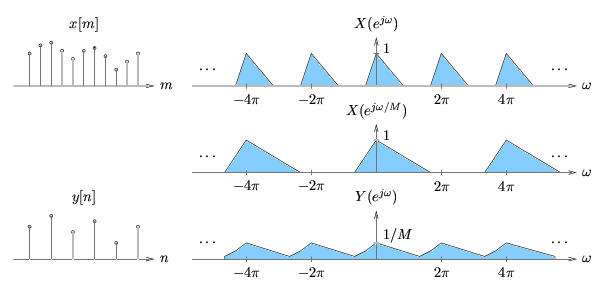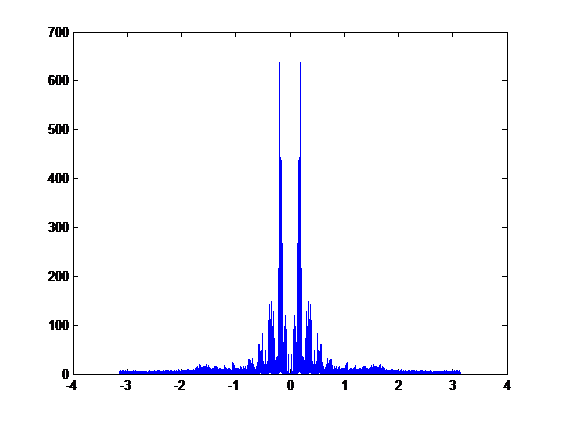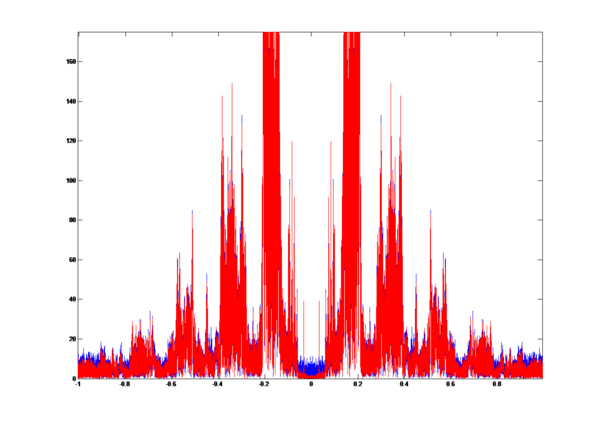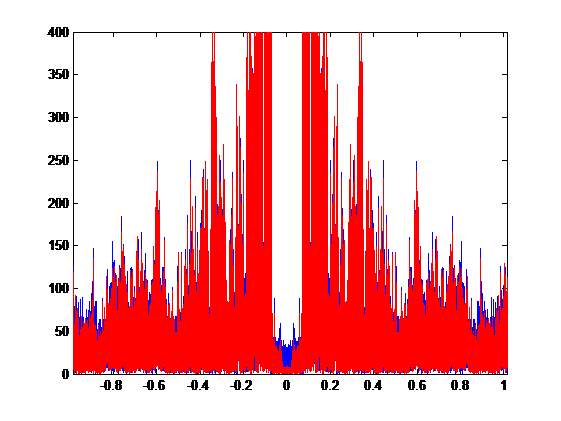Audio Signal Processing with Down-sampler and LPF Investigate
Abstract
This document is investigating the effectiveness of a LPF, (low-pass-filter) when down-sampling. We are going to down-sample various types of audio signals with down-samplers which have different down-sampling rate.
Introduction
Formally, down-sampling can be written as
y[n]=x[Mn]
In the frequency domain, we will have
The following figure could illustrate the reason of aliasing in down-sampling.
This Figure is done by Phil Schniter.
In this project, we are going to discuss how much the LPF will help in the audio signal down-sampling.
Procedures:
PART I.
In the first part of this project, we are going to develop the LPF effect to different down-sampling rates of 4, 8, and 16. In this project we are using FIR (finite impulse response) filter.
The audio signal we use is part of Waving Flag, the theme song of 2010 South Africa World Cup. We choose this signal because that this sound includes clear mix of human voice and sound of instruments.
The sound of original signal: projectrhea.org/rhea/images/f/f3/Flag.wav
The DFT of original signal:
1. Down-sampling rate of 4:
Without using a LPF filter, the down-sampling signal: projectrhea.org/rhea/images/2/26/Flag4.wav

By using the LPF filter (Gain = 1 and Cut-off frequency = π/4), the down-sampling signal: projectrhea.org/rhea/images/1/16/Flag4f.wav
To compare the two signals above, we get the overlap graph:
The blue plot is the signal without LPF and the red plot is the signal with LPF. We can easily find the aliasing part in the graph.
Compute the correlation coefficient r = 0.9958.
2. Down-sampling rate of 8:
Compare the down-sampling signals with and without LPF, we get the overlap graph:
The blue plot is the signal without LPF and the red plot is the signal with LPF.
Compute the correlation coefficient r = 0.9744.
3. Down-sampling rate of 16:
Compare the down-sampling signals with and without LPF, we get the overlap graph:
The blue plot is the signal without LPF and the red plot is the signal with LPF.
Compute the correlation coefficient r = 0.9475.
Conclusions and finds of Part I:
1. When we really hear the signal, the LPF is more effective when down-sampling rate will not cause the source sound distorted. The audio signal we input, which is MP3 sound quality, is a human voice which is sampled at 44,100 Hz. The typical human voice frequency ranges from about 60 to 7,000 Hz. In this project, a down-sampling rate larger than 6 will weaken the function of LPF. So if we already distorted the signal when we down-sampling it, the LPF is less effective.
2. From the correlation coefficients, we can see that the correlation coefficients are decreasing when sampling rate increased. The correlation coefficients may not relate to the similarity of two sounds.








